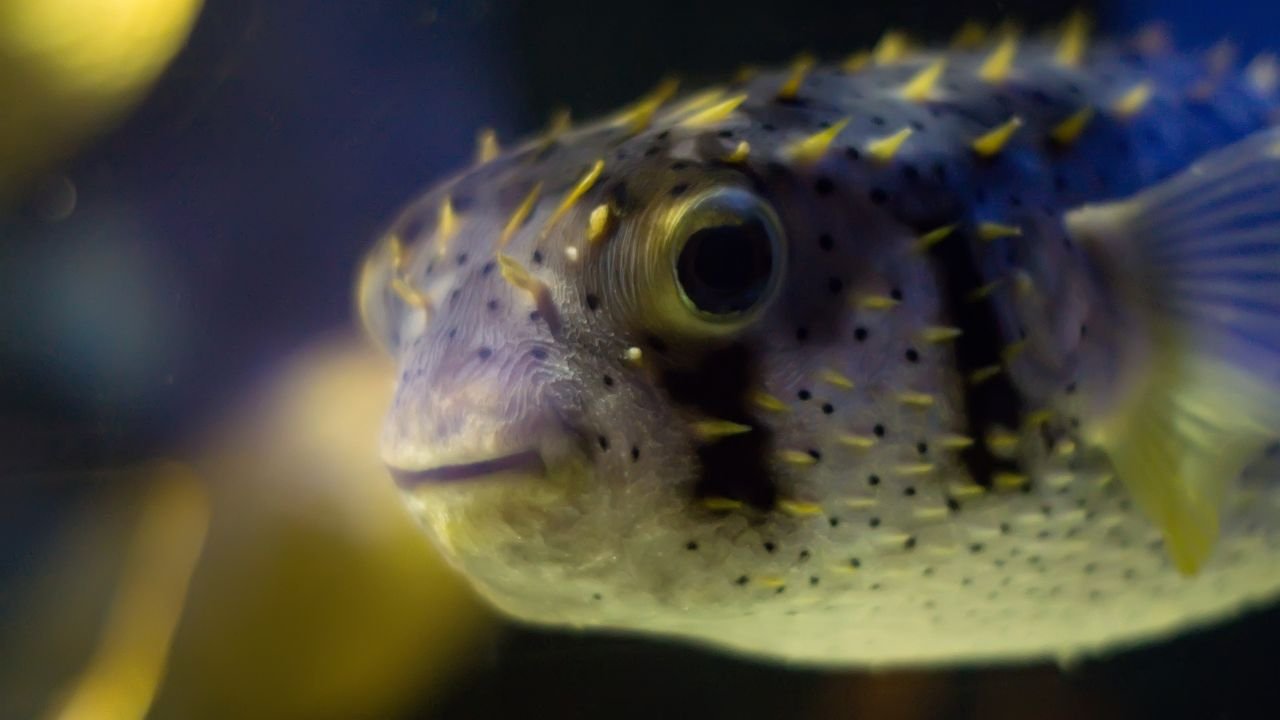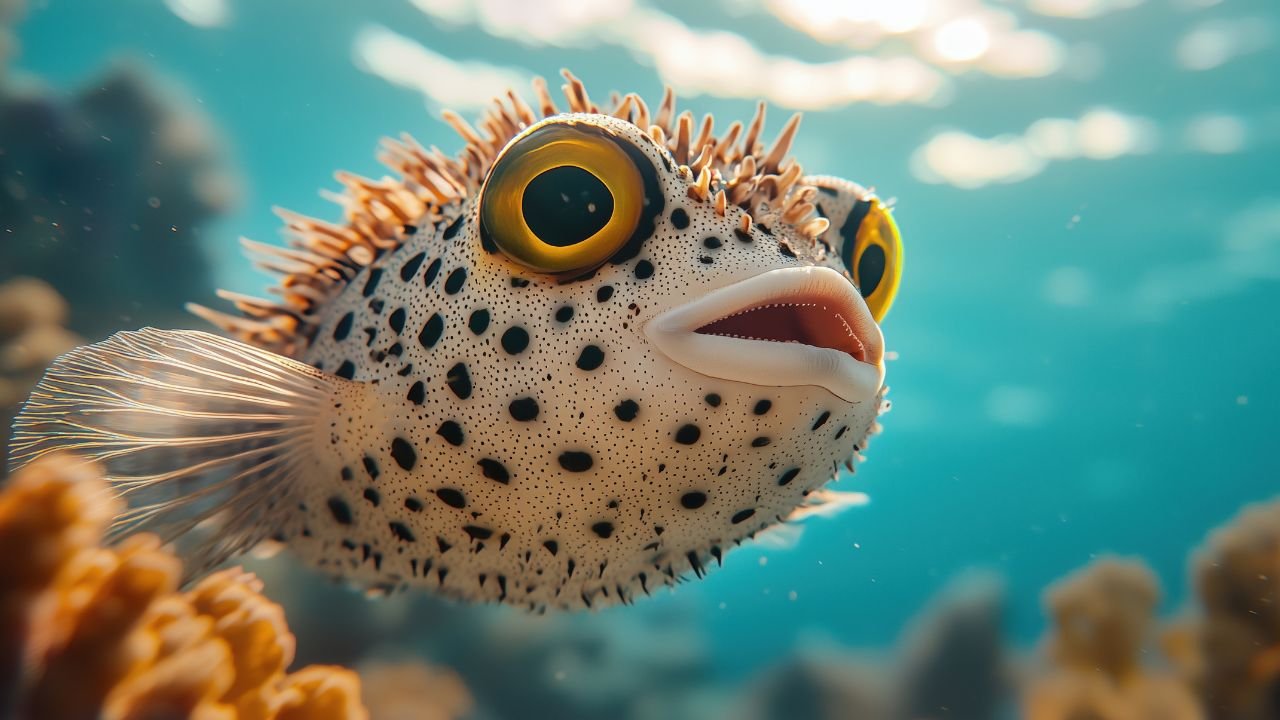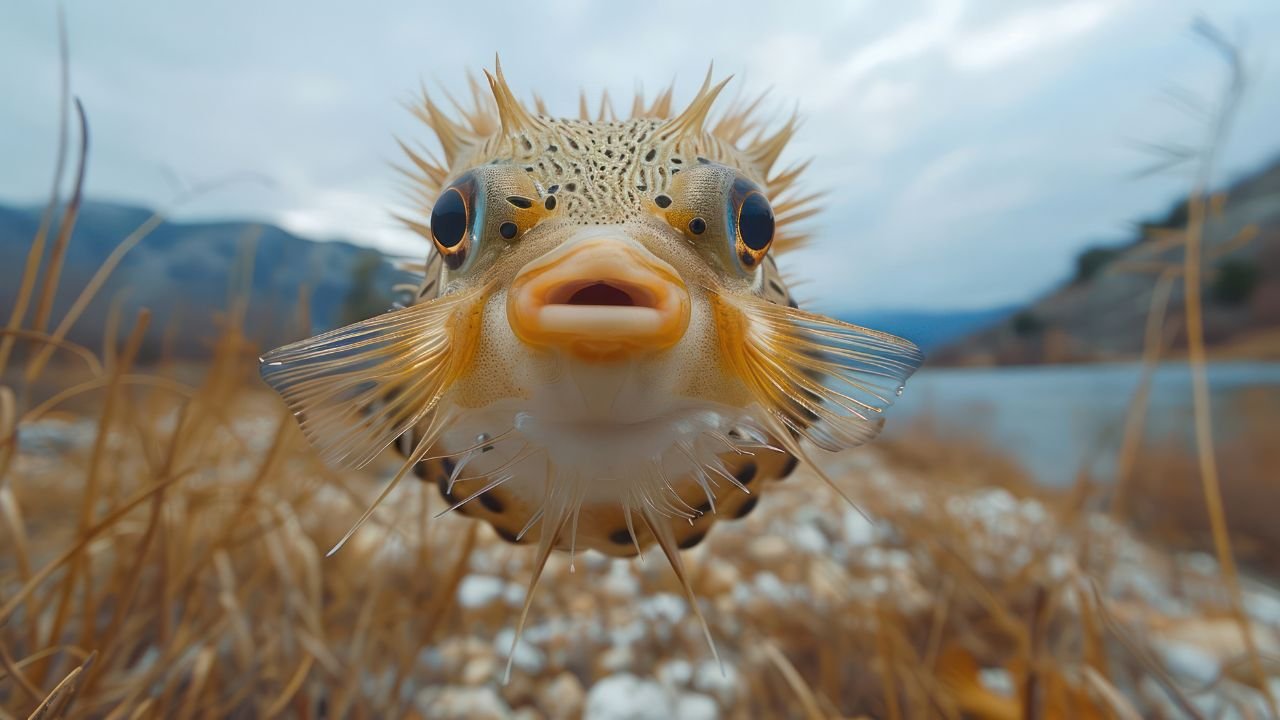Porcupine Puffer Fish Care: What You Need to Know
The Porcupine Puffer Fish is a unique and fascinating fish. With sharp spines and the ability to puff up when scared, it’s easy to see why people love them. They may be cute, but they require careful care. If you’re ready, here’s how to keep your Porcupine Puffer Fish healthy and happy.
What is a Porcupine Puffer Fish?
The Porcupine Puffer Fish is known for its ability to puff up. It’s both cute and tough at the same time. These fish come from warm waters in the Pacific and Atlantic Oceans. They can inflate when scared. People love them not just for their puffing ability but also because they are curious and social. They enjoy exploring their surroundings.
- Choosing the Right Aquarium Size
- The Best Filters for Small Aquariums
- Fish Tank Lighting and Fish Behavior
- Best Aquarium Fish Food
Tank Size and Setup
Let’s talk about tank size. Porcupine Puffers need space—not a small bowl. A 75-gallon tank is the minimum for one of these fish. Since they grow fast, you’ll need a bigger tank soon. Think of it as upgrading your fish’s home. Here’s why:
- Room to Swim: These fish love to move around. They need plenty of space to swim and explore.
- Territorial Needs: Porcupine Puffers can be a bit picky about their space. They need enough room to claim their territory and feel comfortable.
Tank Setup
To keep your fish happy, here’s what you need:
- Substrate: Use soft sand or fine gravel. Avoid sharp edges—these fish are already covered in spikes.
- Hiding Spots: They enjoy some privacy. Add rocks, caves, and driftwood to create hiding spots when they want a break.
- Filtration: A strong filtration system is a must. Porcupine Puffers are not the cleanest fish, so keep the water fresh.
Water Parameters
Water quality is key. Clean water helps your fish stay relaxed, healthy, and ready to puff when needed. Here’s what to keep an eye on:
|
Water Parameter |
Ideal Range |
|
Temperature |
75-80°F (24-27°C) |
|
pH |
8.1 – 8.4 |
|
Salinity |
1.020 – 1.025 SG |
|
Hardness |
10-15 dGH |
|
Ammonia/Nitrites |
0 ppm |
|
Nitrates |
Less than 20 ppm |
Water Quality
- Test the water every week for ammonia, nitrites, and nitrates. Fish don’t like chemicals in their water!
- Change 20–30% of the water each week to keep it fresh. Fish don’t like dirty water either.
- Keep the temperature steady—no extreme hot or cold fluctuations!
Feeding and Diet
What do Porcupine Puffer Fish eat? They love meaty snacks! They don’t eat seaweed; they prefer protein. Here’s what they love:
What to Feed
- Shrimp (live or frozen)
- Crabs (they love crustaceans)
- Snails (a favorite treat)
- Squid and clams
|
Food Type |
Frequency |
|
Shrimp |
2-3 times a week |
|
Crabs |
1-2 times a week |
|
Mollusks |
1-2 times a week |
|
Clams |
1 time a week |
|
Squid |
1 time a week |
Feeding Tips
- Give your fish variety—don’t feed them the same thing every day, or they’ll get bored.
- Their teeth grow constantly, so feed them foods with hard shells to help keep their beaks trimmed.
- Don’t overfeed—no one likes a bloated fish! Plus, overfeeding can harm water quality.
Behavior and Temperament
Porcupine Puffers are full of personality, but they do have quirks.
- Inflation: They puff up like a balloon when they feel threatened. Don’t worry—it’s their way of saying, “Back off!”
- Territorial: They need personal space, like a roommate who doesn’t like to share. They don’t get along with all fish—just big, calm ones.
- Curious Explorers: When they’re not puffing up, they’re exploring, checking out caves, or playing with decorations.
Tankmates
Porcupine Puffers do best alone or with larger, non-aggressive fish. They may try to eat smaller fish, so avoid keeping them with anything that fits in their mouths.
Lifespan and Growth
A Porcupine Puffer Fish can live up to 10 years with good care, so be ready for a long-term commitment! These fish grow fast, so they won’t stay small for long.
- Growth: They can reach 8–12 inches. If you start with a tiny puffer, this might surprise you.
- Lifespan: With proper care, they can live 10 years or more—you’ll have a fish friend for a long time.
Breeding Porcupine Puffer Fish
Breeding these fish is tough. They are like the James Bond of the fish world—hard to catch and even harder to breed. They require special conditions, and most aquarists won’t succeed.
- Mature Fish: They must be at least 3–4 years old.
- Perfect Conditions: In the wild, breeding conditions are ideal. In captivity, it’s much harder to replicate.
Cost and Grouping

Cost of Porcupine Puffer Fish
Think about the cost before getting your new fish.
|
Item |
Estimated Cost |
|
Porcupine Puffer |
$50 – $150 |
|
Tank Setup |
$500 – $1,500 |
|
Water Testing Kits |
$20 – $50 |
|
Monthly Maintenance |
$50 – $100 |
Grouping and Tankmates
- Group Care: Porcupine Puffers are solo fish. Keep them alone or with large, calm fish.
- Tankmates: Don’t add small fish—they may end up as snacks!
Conclusion: Is the Porcupine Puffer Fish Right for You?
If you’re ready for the challenge and have the space, a Porcupine Puffer Fish can be a great addition to your tank. They’re fun, quirky, and full of personality. Like all pets, they require care, patience, and attention.
If you give them a good home, you’ll enjoy watching them swim, explore, and puff up at their reflection. Remember, while they may look tough, they need love and attention to thrive.



